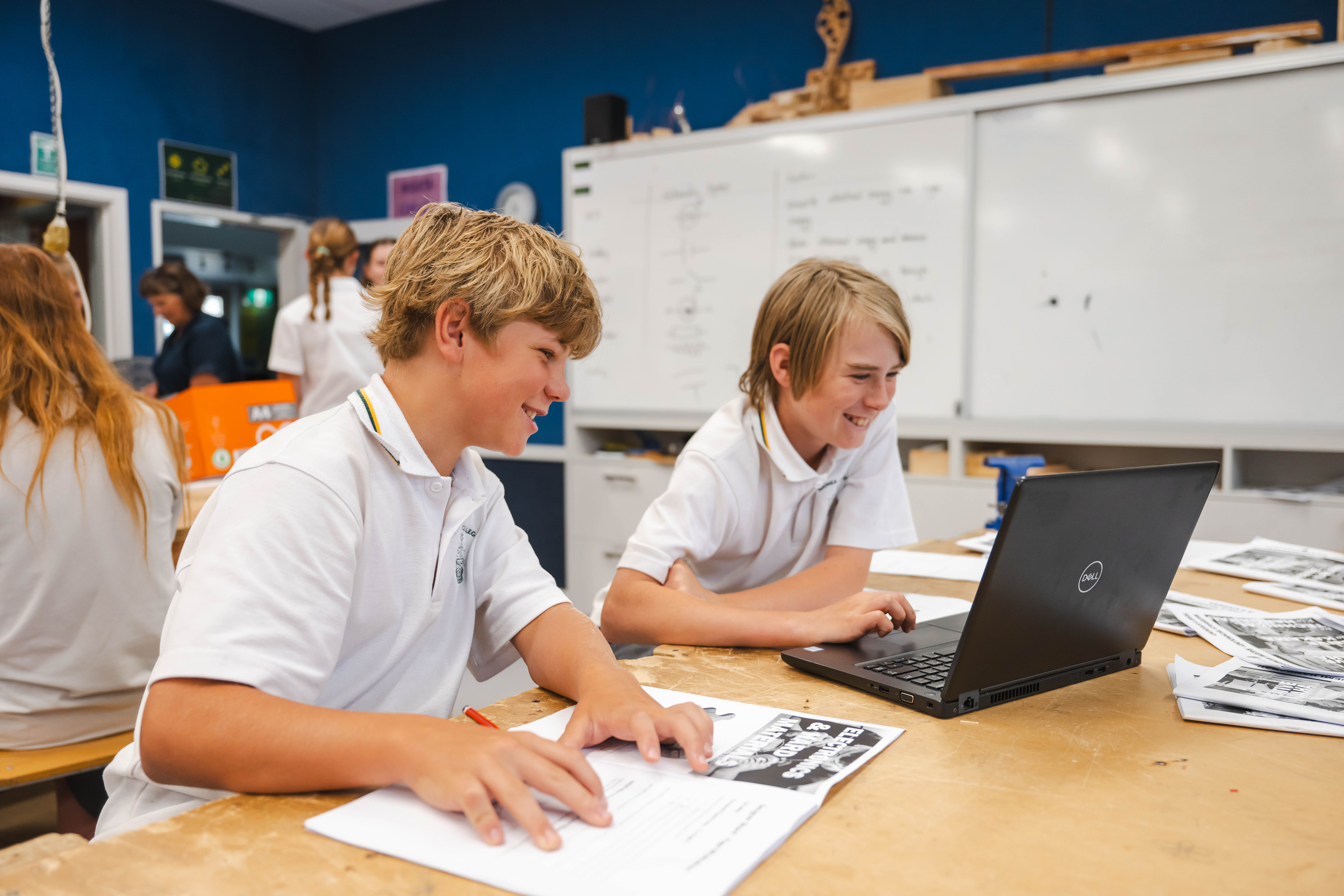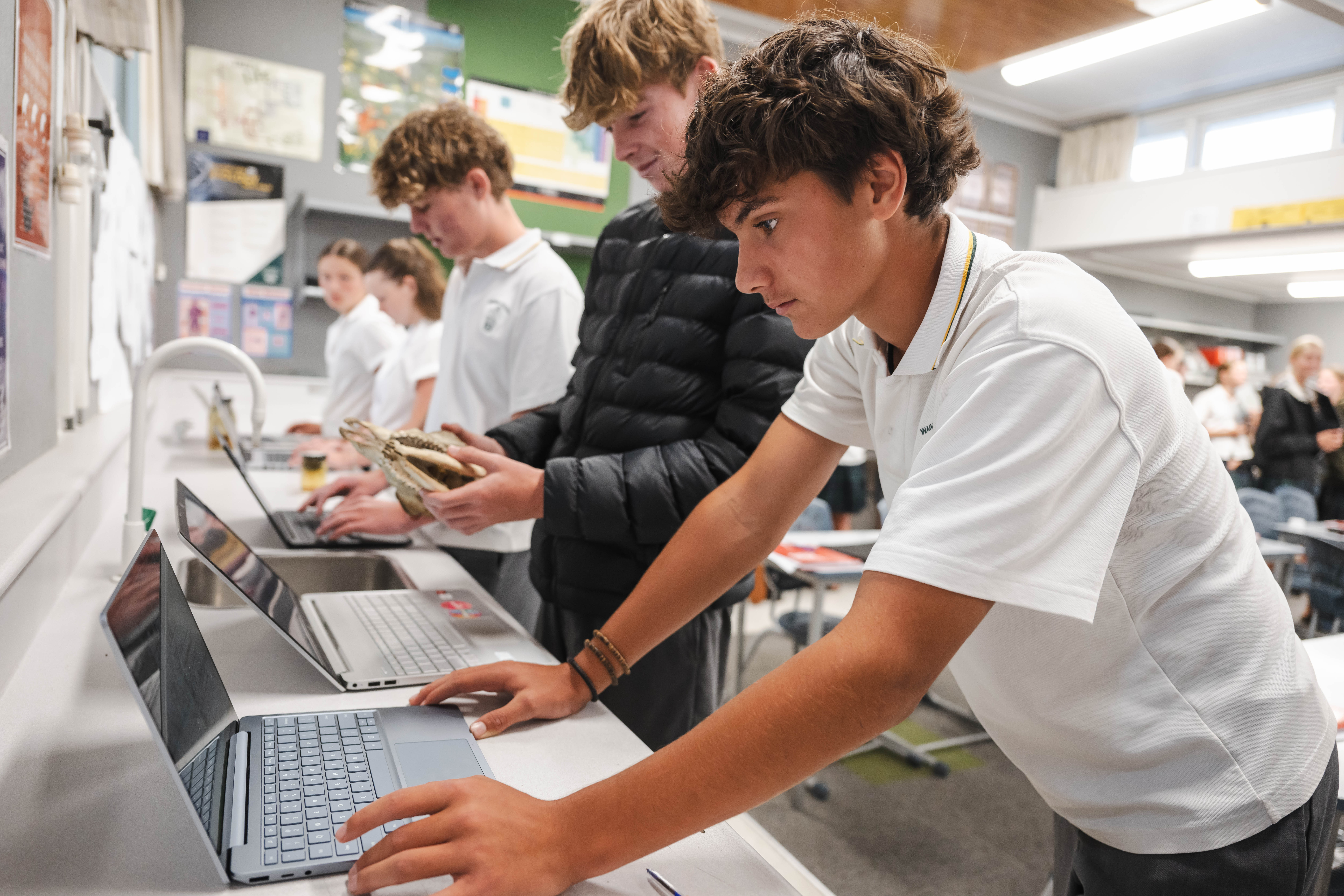BYOD (Bring Your Own Device)
Overview
Our BYOD Strategy has been formed through a combination of research of emerging best practice, learning from other schools’ BYOD experiences and listening to the views and needs of our teaching and support staff. We believe that having access to a device that is used thoughtfully can enhance a student’s learning, allowing them to be connected, collaborative and creative in ways that would not be possible otherwise.
Please refer to the agreement on the enrolment form “Devices, digital learning and the school network” and our school polices and procedures.

Waimea College is a ‘BYOD’ school.
We expect all students to have a device (Laptop or Chromebook) for learning at school each day.
Recommended Devices
If your child / tamariki already owns a device then it is likely we will be able to accommodate it. Our school is using Microsoft 365 as the main learning platform, the key features of which can be accessed through a web browser.
It will be key that the students have a BYOD device that can enable them to learn without any barriers. However, not all devices are suitable and if you are at the stage of purchasing a device for your child then the following specifications (specific for certain year groups) will ensure that the device you buy can best support the intended learning outcomes and classroom use.
Junior Students
For Junior students, our recommended device is a Chromebook. Chromebooks are well-suited to school use, being rugged, compact, priced around $400 and able to access the web-based applications and services that we will use with Junior classes.
Chromebook Specifications
• Large screen (11.6” is adequate, but 14” is ideal)
• At least 4GB of memory (8GB will help apps to run faster and feel ‘snappier’)
• At least 32GB of storage
Senior Students
For Senior students, our recommended device depends on which courses a student opts for. In many cases, a Chromebook will be suitable.
However, some courses make use of specialist software (e.g. Adobe applications such as Photoshop) and a Windows laptop is required for these. Students should seek the advice of teachers and refer to the course descriptions.
Windows Laptop Specifications
• Intel i3 Processor (or higher)
• Large screen (13” or greater)
• At least 8GB of memory (16GB is preferred, especially for apps like Photoshop)
• At least 128GB of SSD storage (more is preferred, especially if working with large files)
Device Suppliers
We have obtained preferential pricing from several suppliers, both local and online:
Noel Leeming, Richmond – In store and online – In store and online
PB Tech – Online – Use the code “BYODWAIMEA”

Access to Devices
We are aware that not all families are able or willing to purchase a device. Students are likely to be more productive with their own device, configured the way they prefer to support their learning. They can also make use of a personal device outside of the classroom. However, if students do not have a device, the school has systems in place to provide access to devices if needed, and to help families to obtain devices.
For further information or questions please email Hamish.Scoggins@waimea.school.nz

